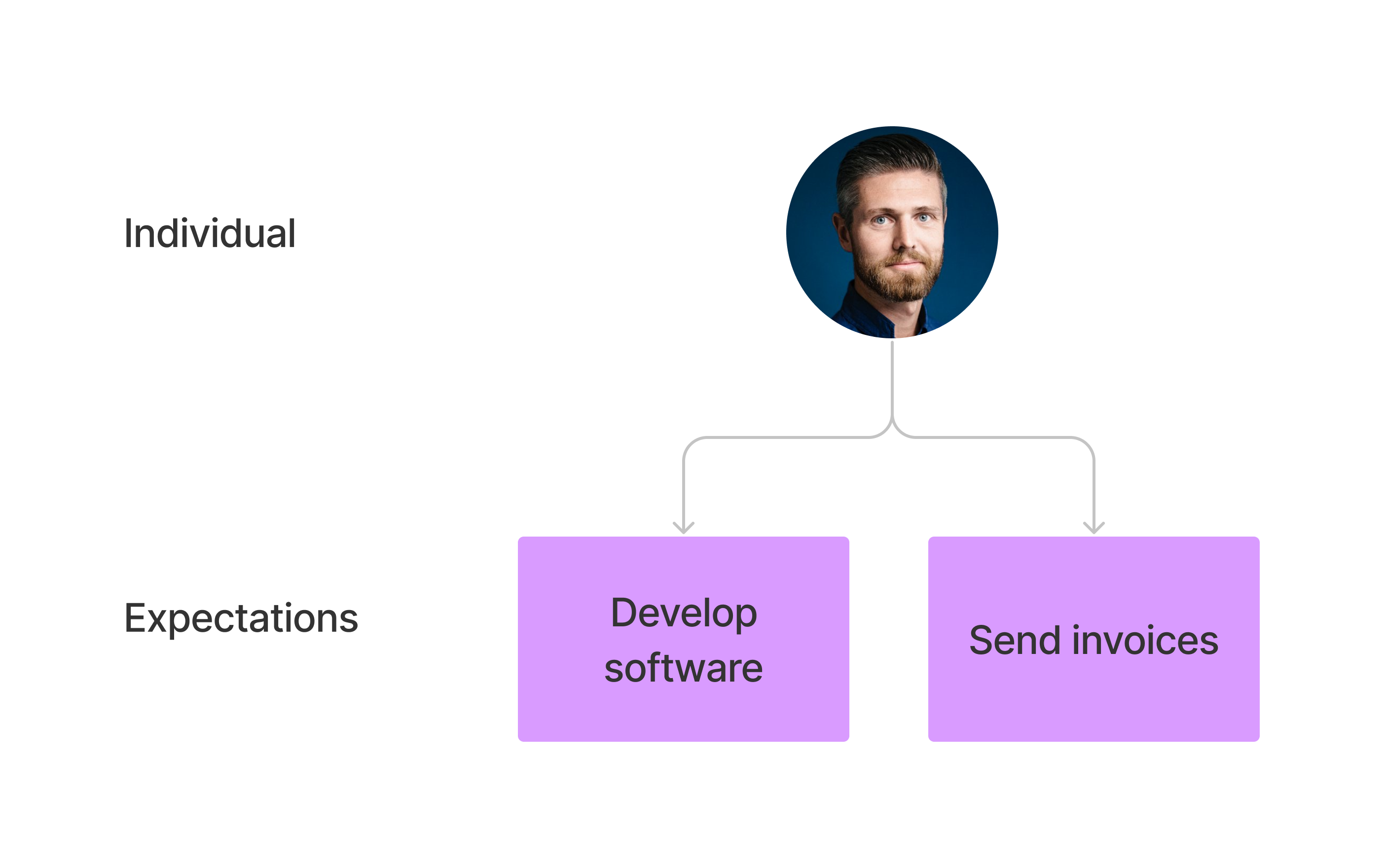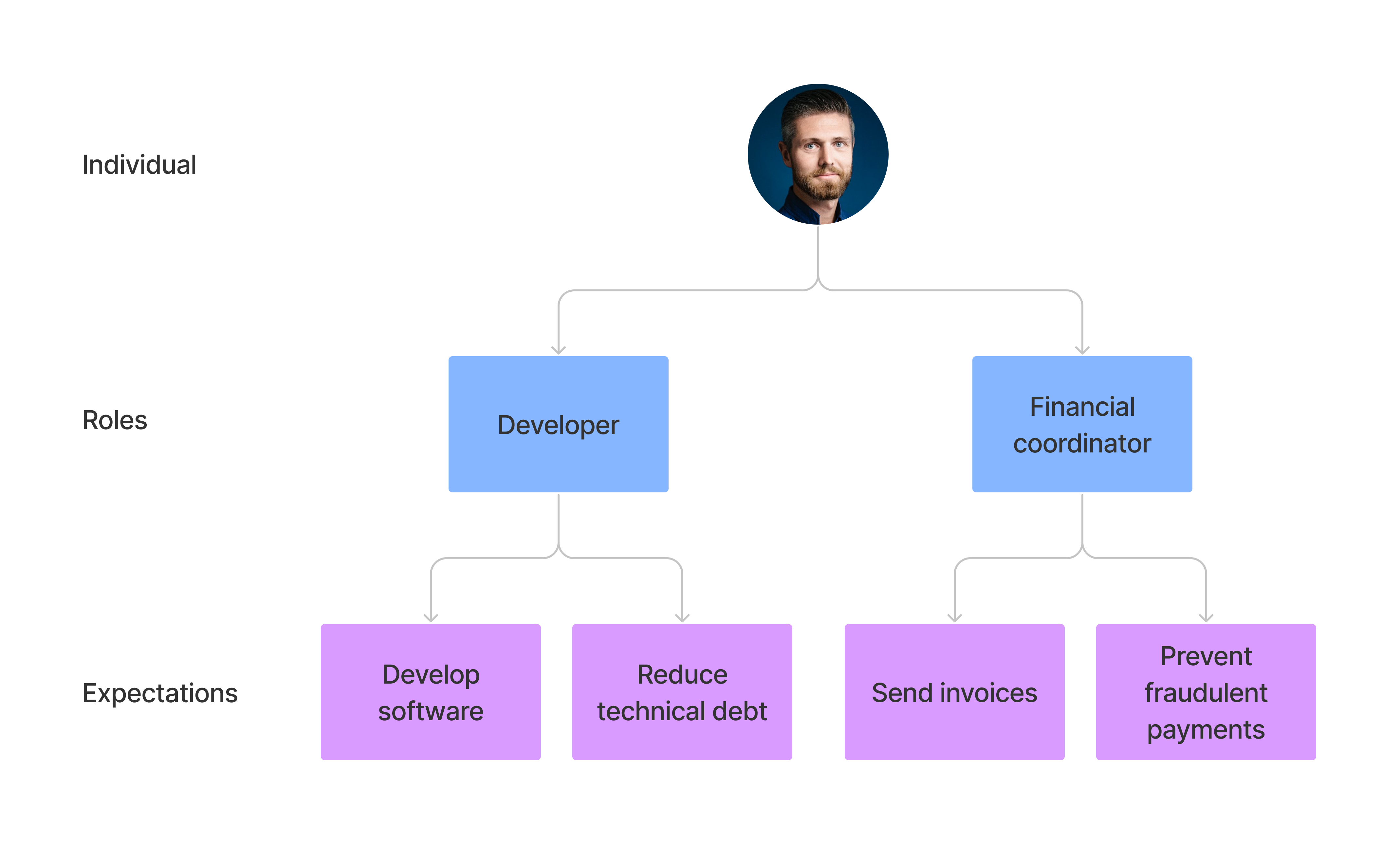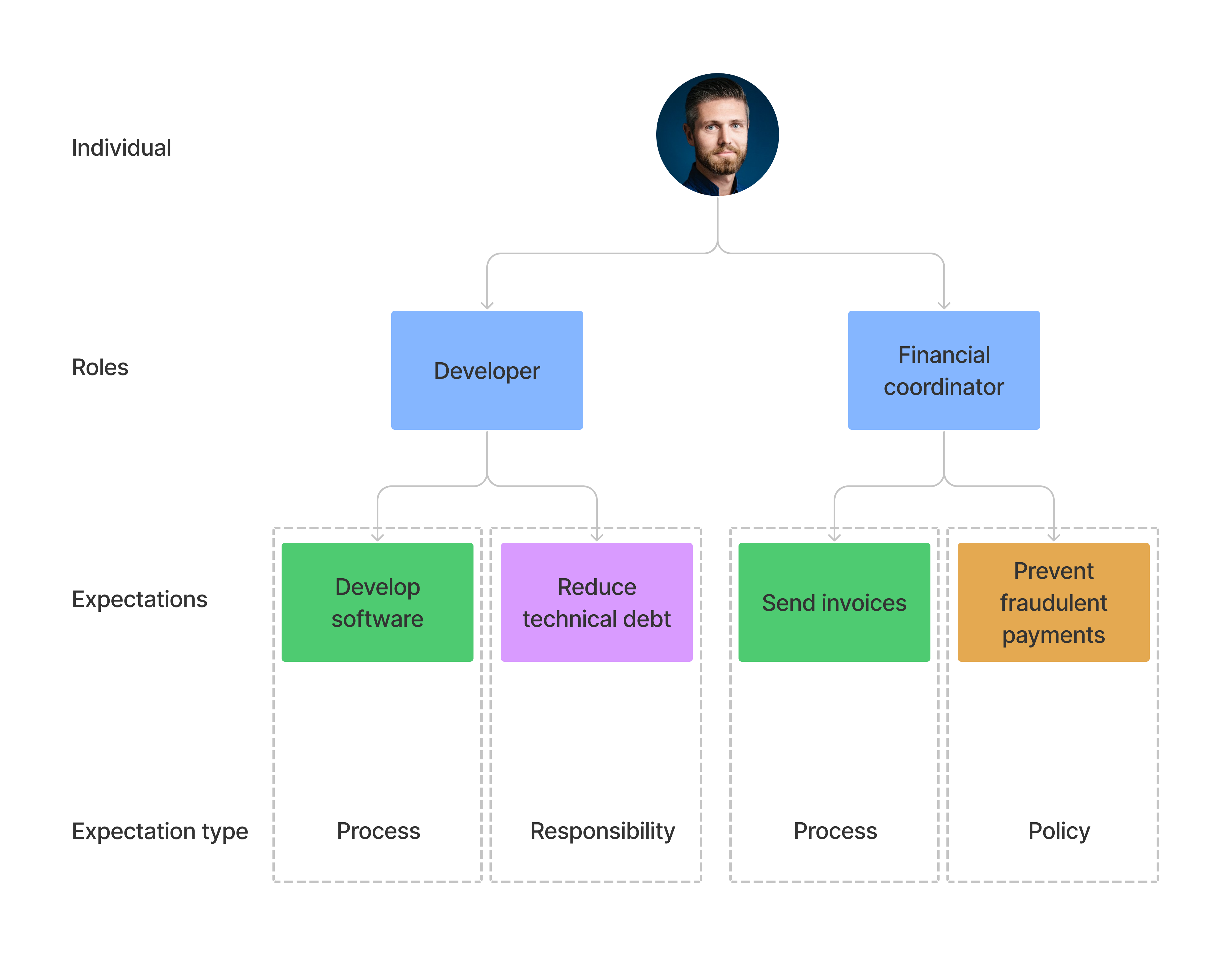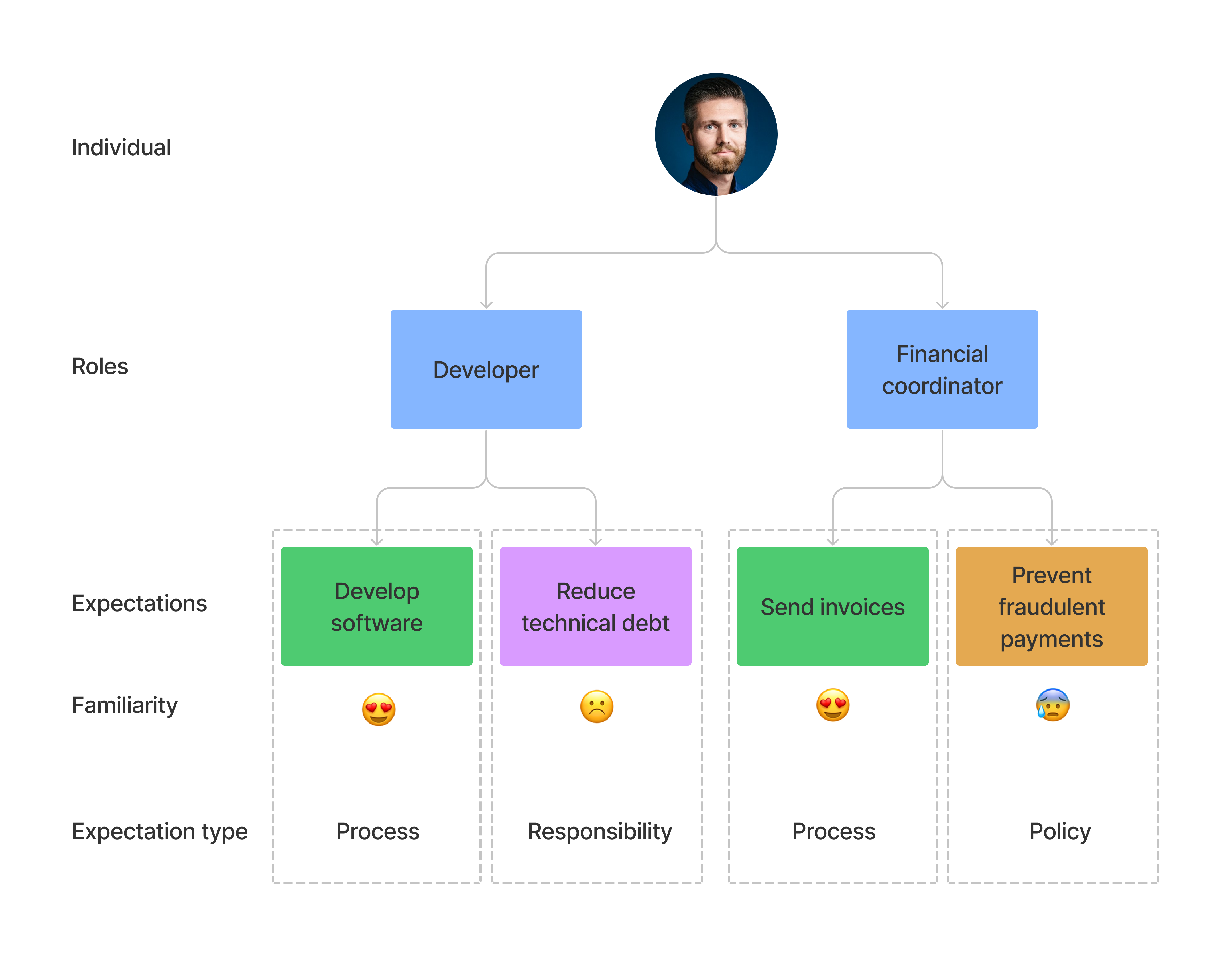Expectations
How to organize team expectations
How can you ensure that the expectations within your team are identified, communicated and clearly understood? In this essay, I cover the concept of expectations and how you can work towards organizing and communicating crystal clear expectations that will help you retain great team members and bring new ones quickly up to speed.
Losing control due to unclear expectations
In 2014 I was leading a small and well-oiled team of five people. Our clients loved what we were doing, and as a result, we decided to add three more people to the team over a short period of time.
Up until that point, I had a pretty good overview of what was being done how and by whom. But when our team nearly doubled, something changed.
Suddenly, the workday seemed to consist of a constant flow of questions regarding how work should be done, or situations where the various implicit expectations of myself and the more senior people weren't met.
This led me to grow more stressed and concerned, and I concluded that there was no sense in growing the team any more until I had tackled this problem.
In hindsight, I have realized that the lack of clearly communicated expectations probably represents the vast majority of all frustration and conflict in any team and organization.
What are expectations?
Before we can talk about expectations, it's beneficial to have a similar idea of what this term means. Here's how I think about expectations:
Expectations are pieces of insight a person is expected to be familiar with and adhere to.
In this case, insight simply means useful knowledge. Some examples of insight in the context of work might include which skills you are expected to master, or how you're expected to behave in certain situations.
The levels of expectation maturity
When teams start taking expectations seriously, I have found that their ability to organize and communicate expectations takes them through four levels of expectation maturity:
Level 1: Individual expectations
The first level of communicating expectations is to associate them with an individual. In this context, someone thinks in terms of expecting something from someone: "I expect you to be able to develop software".

At this level, we are slowly starting to make the implicit explicit, helping us to better understand, articulate and align around individual expectations.
Level 2: Role expectations
At level 2, we have a better understanding of why we expect something from someone. Presumably, it's not just because of who they are, but rather which roles we expect them to play.
The term role is used in multiple contexts in everyday speech, but in this context, I am referring to roles as the different "hats" one holds at various times during the day.
To take me as an example, throughout my workday I hold the roles of CEO, Developer, Insight manager, Salesperson, and many more. And then, when I come home, I hold the roles of Parent, Partner and Roommate, to name a few.
In the context of this conversation, we can think of roles as labels for collections of expectations that can be naturally tied together.

Associating expectations via roles makes it easier to articulate and understand why we expect what we expect from each other, and makes it easier to uncover related expectations by doing research and thinking about our understanding of the role in general.
Connecting expectations with roles also allow us to more easily reuse expectations by realizing that multiple people often hold the same roles (the generic Employee-role, for one), and are therefore expected to adhere to the same expectations.
Level 3: Expectation types
At level three, we start to see that multiple expectations are of a similar nature, enabling us to identify expectation types. Some examples of expectation types include:
- Responsibilities
- Processes
- Policies

Realizing that there are different types of expectations and being able to differentiate between them makes you and your team much better equipped at identifying missing expectations by asking questions like "Which responsibilities do we expect from this role?" and "Which policies do we expect this role to adhere to?"
Level 4: Familiarity with expectations
At level four, we introduce the concept of familiarity in order to better understand how familiar each individual role holder is with their expectations.
Is Susan actually comfortable with this responsibility? Is Peter even aware of this policy?

By including familiarity into our expectation mix, we can more realistically determine which expectations are likely to be upheld, and better identify and support people with a lower than expected familiarity.
Conclusion
In this essay, I've covered how to think about organizing expectations, and the benefits associated with each level of expectation maturity.
If you are looking for a best-in-breed platform for managing the expectations of your team or organization, check out the Wecomplish platform.